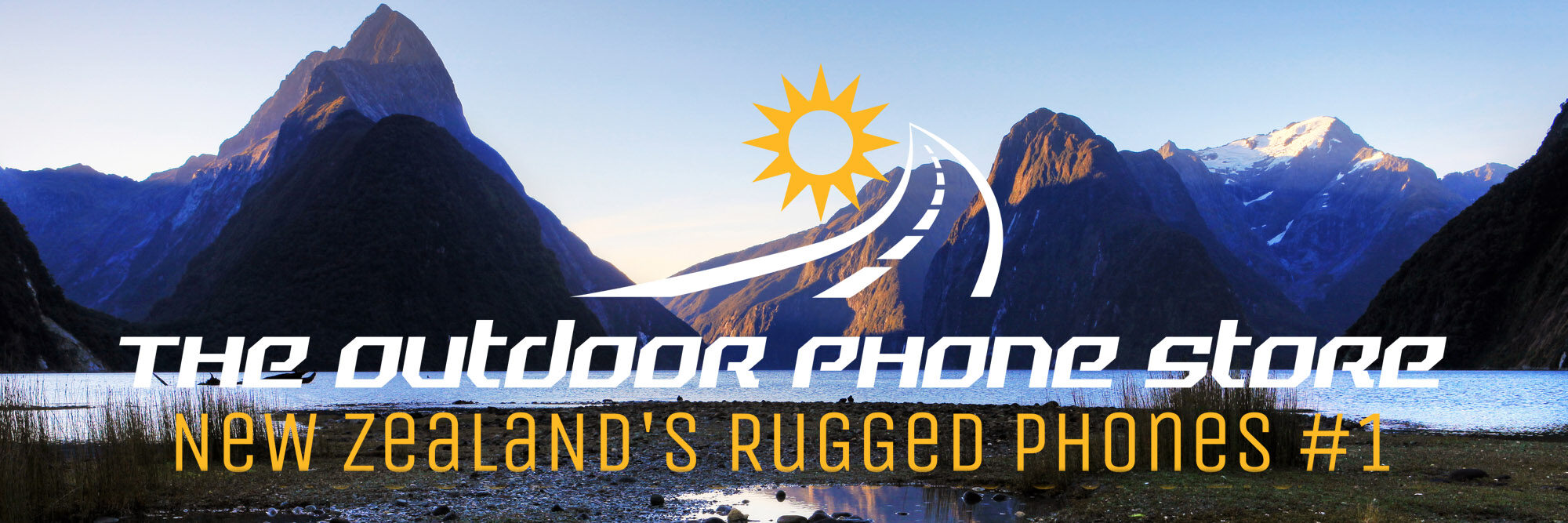In association with The Nile

FLYING A KITE
Michael Morrissey tracks the Rich, and finds a skeptic promoting unproven theories of her own
THE RICH By William Davis, Icon Books, $29.99

Judging by earlier titles such as It’s No Sin to be Rich, Have Expenses, Will Travel, Children of the Rich – Davis is much given to writing about the wealthy. It is a breed of which he thoroughly approves. He vehemently attacks the arguments that being rich is a matter of exploitation. Terms like “stinking rich” and “filthy rich” spring from envy or flaunting of moral superiority, he says. He also makes favourable mention of those who give large sums to medical research or other worthy causes. Examples include Elton John, Eric Clapton and Bill Gates. The world’s wealthiest person, Gates has put $29 billion into a charitable foundation and claims he will give away 95 per cent of his wealth before he dies. Bravo Bill!
And if this sounds too serious, just remember – as Davis reminds us – the rich do buy things like yellow submarines, Zeppelin airships and five-foot-high acrylic aquariums shaped like elephants.
While it is heartening to read about the wealthy giving back the money to the wider community, Davis does not examine any of the sharp practices and ruthless conduct that often accompany the building of a large company though there is a chapter dealing with rich crooks. To be condemned by Davis you have to be outright crooked. Puzzlingly, Pablo Escobar, the Colombian cocaine drug warlord and arguably the richest crook in history, is not mentioned.
In case – though it is probably unlikely – you find yourself invited to a weekend house by Old Money, Davis lists some handy tips on how to conduct yourself. Don’t, for instance, boast about a recent deal through which you made a packet – “simply not done”. On no account be impressed by the $50 million Picasso hanging on the wall of a room as large as a football field. After all, you are used to such luxuries, right? You must participate in any silly parlour games played by these idle folk. Suitable topics for discussion include horses, dogs, gardens, taxes and, of course, problems with servants. Old Money conducts itself thus: “We do not hustle, we do not push, we are not aggressive”.
Alas some of the rich, especially those showy folk called nouveau riche, appear not to have heard of these rules. Examples might include William Randolph Hearst, Donald Trump, Richard Branson and the late Elvis Presley. Monarchs are usually not bashful about flaunting their wealth either as Davis duly reveals. The rich can be found everywhere though still mainly in the United States followed by Germany, Russia, Japan and Britain.
While providing an informative Cook’s tour of the famous wealthy, Davis’s accounts and analysis tends to be shallow and the inner psychology of what drives people to stop at nothing in the accumulation of wealth is not explored in any depth. His writing style is banal and often given to generalisations when particularity would have better exampled his case. Eg “… cancer and heart disease continue to kill many people …”
While many a successful entrepreneurial rise to success has been made by ignoring negative advice – “It can’t be done. It costs too much. It’s risky. It takes too long to get returns” – there is, in the name of pro-wealth positivity, little examination of the overwhelmingly larger number of people who also ignored sensible advice and wound up broke. And, one wonders, is Davis himself getting rich by writing about the financially over-endowed? For his sake, I hope so.
MICRO NATIONS by John Ryan, George Dunford and Simon Sellars, $29.99

If you stopped someone in the street and asked them, “What is a micro nation?” their eyes might momentarily glaze then they might respond, “A small country?” And they would be right. But in the context of this fascinating, entertaining and handsome little book, a micro nation is more or less an imaginary country invented by a single individual or a few which may have no actual territory or a very tiny amount, e.g. the “nation” founder’s own property – though there are some interesting exceptions to this definition.
Though some of these “countries” have no dominions to rule or no recognised government, the ingenious inventors have composed a geography and history. Some even have passports and stamps. One of the grandest of these non-United Nations recognised nations is the Hutt River Province principality in Australia.
Hutt River was founded in 1970 by wheat farmer (now Prince) Leonard George Casley, after a dispute with the legitimate government about his crop allotment. The Hutt Valley nation is one of the larger micro nations covering some 75 sq kms with its own passport, visas, stamps and currency. In a spirit of invention that may owe something to Jonathan Swift and Lord of the Rings, The Hutt also has Province magnets,T-shirts, stickers, commemorative spoons, badges and CD recording of the national anthem plus a Royal Art Collection. There is a tearoom that offers light snacks but if you plan an overnight stay you are advised to bring your own food. Relations with the Australian government have proved difficult – it failed to recognise the province and demanded taxes – so the Prince declared “war” in 1977. So far no shots have been fired.
Other colourful examples – though they are all colourful – include Freedonia, which was originally named from the Marx Brothers’ film Duck Soup and associated with a disastrous claim to land in Somalia; the Copeman Empire which consists of a mobile caravan in Sheringham England – the owner and King, who owns a corgi, offers cucumber sandwiches and tea for a modest fee; Lovely, an invention of British comedian Danny Wallace who fronted a 6-part TV programme entitled How to Start Your own Country; Danny’s own country consists of his own flat, address not to be revealed – though a map is provided. In terms of exotic appellation, my favourites are the Sovereign Kingdom of Kemetia, Principality of Trumania, the Kingdom of North Dumpling Island and the redoubtable republic of Kugelmugel. There are more of these novel geographic beasties that you might imagine – Micro Nations has 52 entries but one website lists over 100.
Are there micro nations in New Zealand? Indeed, there are. Two are mentioned here – Whangamonona near Stratford which in micro national terms has the full monty – its own football team, beer, hotel cafe and motor camp. “Buying a passport (NZ $3) is advised as the border guard has been known to be armed with water pistols”. Honourable mention is made of Borovnia, an imaginary land invented by Pauline Parker and Juliet Hulme who murdered Parker’s mother in Christchurch in 1954 and recently the subject of the excellent Peter Jackson film, Heavenly Creatures.
So far so good. But why no mention of the Sultanate of Occussi-Ambeno, an imaginary micro nation with an historical foundation – a former Portuguese enclave in east Timor excised from maps when Indonesia invaded in 1975 – invented by the mildly notorious Bruce Grenville. Apart from its magnificent stamps, it has an elaborate history and geography, and the photograph of the Sultan may possibly be Grenville himself in a fez.. Fauna include the Garuda bird and the flying Naga Unggu which curiously is related to the flightless Komodo dragon. I can only urge the editors of Micro Nations to do a revised edition and include this third kiwi micro nation.
Obviously an imaginary country without any territory is a lot easier to create than one that lays claim to any land. Attempts to create new nations micro or otherwise in the real world are fraught with peril. When a Las Vegas real estate property developer had several barges of sand poured on a reef just off Tonga and christened it Minerva, the Tongan government sent in troops to pull down the Minervan flag. To make it really difficult, the wet-blanket 1982 United Nations Convention of the Sea decided that any micro nation created at sea falls under the jurisdiction of the nearest country. Unless you own your own patch of dirt, the conceptual country existing purely as a work of fiction looks the safer bet.
IN THE NAGA’S WAKE by Mick O’Shea, Allen & Unwin, $32.99

Mention the Mekong river to most people and you might get a mention of the golden triangle – and not much else. This gripping travel account will expand the reader’s knowledge of the world’s eighth longest river – 4909 kilometres long. The kayak-based journey successfully completed by Mick O’Shea and his companions is not for the faint-hearted, involving numerous class V and the even more terrifying gateway to terror, class V-plus runs on boiling white water.
The Mekong – which is sourced in the Lasagongma Glacier – along with the Indus, Yangtze, Yellow, Salween and Brahmaputra rivers originate on the vast and high Tibetan plain. Surprisingly – for this reader – fish can be found at 4600 metres above sea level. Journeys like these are a two-edged sword – much of the time death is not far away; at the same time O’Shea writes: “I don’t think I ever felt more alive.” And that was just at the beginning of his adventure. The last time a comparable exploration had been done was over 100 years earlier.
The author’s daring is not just on the physical level – which involved 12 hours a day on the turbulent river – but also deciding to proceed without a permit. In the grand tradition of exploration, if you run a rapid you get the right to name it – or should one say, re-name it as the local inhabitants may already have named it.
Like all specialist activities, kayaking has its own vocabulary. So we have wave trains, rooster tails and keeper holes. The latter is a whirlpool that keeps the kayaker whirling around in trapped circular fashion. Also “fat bastards” – big walls of crashing water named after the character in the Austin Powers’ films. In contrast to the gripping descriptions of battling turmoiled water, there is the generous warmth and hospitality of the Tibetan people, some of whom were more than a tad worried about O’Shea’s death-defying feats on the mighty Mekong.
In the latter part of his book, O’Shea gives a lyric account of his travels through Vietnam, Laos, Cambodia and Burma and notes with regret that the enormous Chinese dam projects on the Mekong will have a devastating effect on the lives of river-dependent tribes and people down river. He also reminds us of the devastation wrecked in Laos during the Vietnam war by American bombing and the tragedy of Cambodian landmines. All in all, O’Shea’s tale is a triumphal run through troubled waters.
ODDZONE by Vicki Hyde, New Holland Publishers, $29.99

Vicki Hyde is a leading New Zealand skeptic. She is chair-entity (!) of the New Zealand Committee of Scientific Investigation of Claims of the Paranormal aka NZ Skeptics and also manging editor of SciTechDaily Review. Mention of Little Green Men is enough to bring her out in a Large Green Rash.
In this tidy tome, she disposes of UFOs and aliens, ghoulies and ghosties, mediums and psychics, possibly surviving moose and moa and, in the last and largest chapter, hoes into alternative archaeology. But before tackling these controversial notions head-on she has an interesting introductory chapter entitled a “Toolkit for the Mind”. She makes the philosophical point that “if something cannot be explained it does not mean it is inexplicable”. She reveals that her own early reading has charted the familiar path of the believer in “alternative thinking” e.g. lashings of science fiction (Arthur C. Clarke and Isaac Asimov) plus Immanuel Velikovsky and Erich Von Danikin. However, rather than becoming a convert, she has reacted back into the apostasy of being a skeptic.
As she points out, many an investigator would give their eye teeth for absolute proof of mind-to-mind communication but various offers of considerable sums of money from the likes of Harry Houdini, James Randi as well as skeptic-minded organisations in Australia, India, England and New Zealand have failed to produce convincing demonstrations and tend more to show the opposite. She concludes by noting that proving something is not the case is more or else impossible. To prove there were no moas left in Aotearoa, for instance, you would have to search every square inch of New Zealand. On the other hand, to prove there is a moa all you have to do is capture one and produce it – so far no one has succeeded. And it seems highly unlikely – though there’s always that lingering romantic hope. After all, the storm petrel was re-discovered 155 years after it had “disappeared”. Cloning, anyone?
To her credit – in case you think Hyde is a cast-iron skeptic about anything that runs against science – she instances the existence of meteorites. The French Academy of Sciences dismissed their extraterrestrial origin until some 3000 stones fell near L’Aigle in 1803. No one now doubts that they come from beyond the earth.
Some of the skeptical explanations for not-quite-explained phenomena are cheerfully romantic. The first New Zealand UFO sighting in New Zealand occurred in 1909. Hyde comments, “It’s just possible that a lone German Zeppelin cruised through New Zealand skies in 1909.” What an exciting idea! – worthy of a Peter Jackson film. On the other hand, alien abductions fail to convince her. Some UFO abduction proponents claim as many as five million Americans have been abducted while here in New Zealand the total is a more modest 3000.
Barry Brailslford, Martin Doutre, Ross Wiseman and most recent of all, Gavin Menzies, are all considered by Hyde but in her view fail to prove their colourful theories concerning Waitaha tribe preceding Maori, or the Celts, Phoenicians or Chinese arriving in New Zealand prior to other ethnic groups. I am sure I am not alone in wanting some of these assertions to be authentic; and if they not literally true then they are the stuff of exciting fiction. The possibility of relevant special effects films is even more pulse-raising. Imagine a fleet of Chinese junks sailing into New Zealand and encountering Maori tribes! That Hyde has not quelled a mythological yearning in her own mind is indicted by her concluding thought that if hoofbeats heard at night prove to be a unicorn, give her a call – or is this her ever present skepticism?
UNCOMMON ENEMY by John Reynolds, Polygraphia, $29.50

John Reynold’s first novel belongs to a genre that continues to fascinate – what would happen if Germany had won World War Two? Dozens of examples of the genre have been published. Prominent titles include The Sound of His Horn by Sarban, The Man in the High Castle by Philip K. Dick and Fatherland by Robert Harris. The Sound of his Horn and Fatherland were both set in Europe and Philip Dick’s book set in America. Daringly, Reynolds places his Nazis in New Zealand.
Uncommon Enemy is an intriguing alternative to the more expected Japanese takeover which is prominently featured in an essay in the recent anthology of speculative alternative history New Zealand As It Might Have Been edited by Stephen Levine – “What if Japan had Invaded New Zealand?” Curiously, many more novels have been written about Germany winning than Japan emerging victorious. Though not formally part of this particular strand of alternative future fiction, C.K. Stead’s Smith’s Dream comes to mind as another exploration of a neo-fascist takeover of the New Zealand government.
In Reynold’s well-detailed period piece, Auckland and nearby environs are the centre for much of the action. In particular, Auckland’s North Shore – a more than familiar literary landscape as a consequence of Devonport/Takapuna being New Zealand’s largest literary colony so to speak – is the backdrop of much of the vigorous in-fighting that features in this book.
The hero of Uncommon Enemy is an idealistic high-spirited young man called Stuart Johnson, and from early on in the novel he is locked in combat with the odious and bullying Hamish Beavis. Initially, they are rivals for the affections of Carol Peterson, and later, perhaps a little predictably, given Beavis’s aggressive nature, they found themselves as ideological protagonists. Stuart joins the resistance and Hamish joins the Nazis.
War time Premier Peter Fraser has a cameo role as a leader who pays the price for refusing to make a Nazi salute by being assaulted by Von Ribbentrop’s henchmen. Reynolds describes an effective Germanisation of England and New Zealand – fascist Oswald Mosley is made Prime Minister of England, Winston Churchill’s home becomes a Gestapo headquarters and the Duke of Windsor is reinstated as King Edward V111; in New Zealand, the Northern Club is occupied and the Academic Values Authority squashes academic freedom at Auckland University College with the decrees of its New Order.
A secondary thread in the plot which adds to the mounting drama of the story is the presence of a couple of White Rose members one of whom does not turn out quite as she seems to be. The White Rose was a student resistance group against the Nazis in wartime Germany. The novel reaches an exciting climax which leaves a lingering strand of hope for the future of the resistance movement. Reynolds’ novel should be enjoyed by those old enough to remember New Zealand’s wartime years but also by younger generations interested in the dark possibility of Nazi rule.







